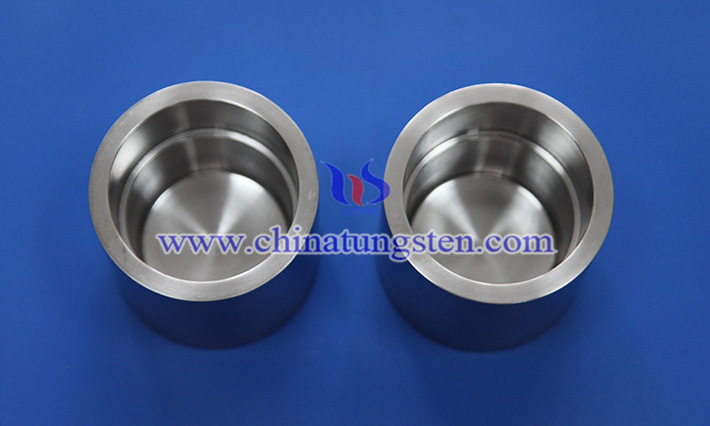Key Technical Challenges of Tungsten Crucible in the Monocrystalline Silicon Growth
- Details
- Category: Tungsten Information
- Published on Monday, 30 June 2025 11:38
- Written by Shuxia
- Hits: 143
As a basic material in the semiconductor industry and photovoltaic field, the quality of monocrystalline silicon directly determines the performance and efficiency of downstream products.
As an important high-temperature container in the monocrystalline silicon growth furnace, tungsten crucible plays the role of bearing and heat transfer of molten silicon, and its performance has a decisive impact on the stability and crystal quality of the crystal growth process. However, its application faces a number of key technical challenges, which require in-depth research and research from material properties, process control, equipment design and other aspects.

First of all, the high-temperature stability and corrosion resistance of the W crucible are one of the core challenges. The temperature in the growth process of monocrystalline silicon is usually above 1410°C, although tungsten has a very high melting point, but working at such a high temperature for a long time, the surface of tungsten crucible is easy to have complex chemical reactions with molten silicon, resulting in tungsten silicide or oxide layer. These reactions not only weaken the structural integrity of the crucible, but can also cause the crucible material to peel off, causing silicon contamination and affecting crystal purity and performance. How to improve the corrosion resistance of W crucible and delay the chemical erosion of materials is the focus of technical research.
Secondly, the heat conduction and thermal stress control of the W crucible also face great challenges. Tungsten has a high thermal conductivity that helps maintain a uniform distribution of melt temperatures, but since monocrystalline silicon growth is extremely sensitive to temperature gradients, any uneven heat conduction can lead to stress concentrations inside the crystal, forming defects such as grain boundaries or dislocations. The wall thickness and shape of the crucible and its fit with the heating system need to be precisely optimized to ensure the stability and uniformity of the thermal field and reduce material fatigue and cracks caused by thermal stress. In addition, tungsten made crucible needs to withstand huge thermal stress during thermal cycling, and how to improve its thermal shock stability and prevent the occurrence of thermal fatigue cracks is the key to prolong the life of the crucible.

Thirdly, the material purity and manufacturing process of W crucible are also technical difficulties. High-purity tungsten materials reduce the effects of impurities on crystals while improving the mechanical strength and thermal stability of the crucible. However, the high melting point and hard brittleness characteristics of tungsten make it difficult to process, and it is easy to produce microcracks, pores and other defects in the preparation process, which will become the source of cracks in high-temperature use, resulting in early failure of the crucible. How to achieve high density, high uniformity and high precision crucible manufacturing is a necessary condition to improve the stability of monocrystalline silicon production.
In addition, the surface treatment and protection technology of tungsten crucible also needs to be broken through. In order to slow down the chemical reaction between tungsten and molten silicon, coating technologies such as molybdenum coating or ceramic coating are often used in the industry, but how to ensure the adhesion, heat resistance and uniformity of the coating and avoid local corrosion caused by coating spalling still need further research and improvement.
- Chinatungsten Online: www.chinatungsten.com
- CTIA GROUP LTD: en.ctia.group
- Tungsten News & Price: www.ctia.com.cn
- Molybdenum News & Price: news.molybdenum.com.cn
- Tel.: 86 592 5129696; Email: sales@chinatungsten.com





 sales@chinatungsten.com
sales@chinatungsten.com